Input interpretation

vanillin
Chemical names and formulas

formula | (HO)C_6H_3(OCH_3)CHO Hill formula | C_8H_8O_3 name | vanillin IUPAC name | 4-hydroxy-3-methoxybenzaldehyde alternate names | 4-hydroxy-3-methoxy-benzaldehyde | 4-hydroxy-3-methoxybenzaldehyde | lioxin | vanillaldehyde | vanillic aldehyde | vanilline | zimco mass fractions | C (carbon) 63.2% | H (hydrogen) 5.3% | O (oxygen) 31.5%
Lewis structure
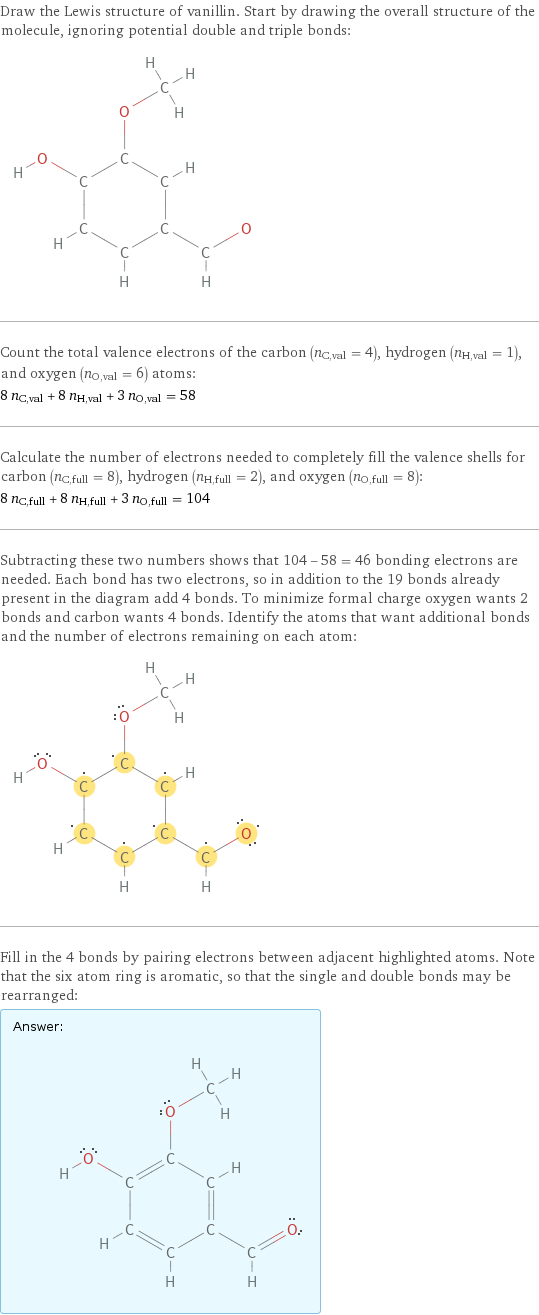
Draw the Lewis structure of vanillin. Start by drawing the overall structure of the molecule, ignoring potential double and triple bonds: Count the total valence electrons of the carbon (n_C, val = 4), hydrogen (n_H, val = 1), and oxygen (n_O, val = 6) atoms: 8 n_C, val + 8 n_H, val + 3 n_O, val = 58 Calculate the number of electrons needed to completely fill the valence shells for carbon (n_C, full = 8), hydrogen (n_H, full = 2), and oxygen (n_O, full = 8): 8 n_C, full + 8 n_H, full + 3 n_O, full = 104 Subtracting these two numbers shows that 104 - 58 = 46 bonding electrons are needed. Each bond has two electrons, so in addition to the 19 bonds already present in the diagram add 4 bonds. To minimize formal charge oxygen wants 2 bonds and carbon wants 4 bonds. Identify the atoms that want additional bonds and the number of electrons remaining on each atom: Fill in the 4 bonds by pairing electrons between adjacent highlighted atoms. Note that the six atom ring is aromatic, so that the single and double bonds may be rearranged: Answer: | |
3D structure

3D structure
Basic properties
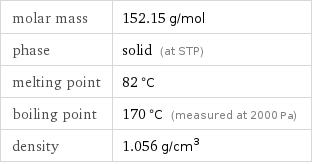
molar mass | 152.15 g/mol phase | solid (at STP) melting point | 82 °C boiling point | 170 °C (measured at 2000 Pa) density | 1.056 g/cm^3
Units

Solid properties (at STP)
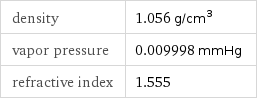
density | 1.056 g/cm^3 vapor pressure | 0.009998 mmHg refractive index | 1.555
Units

Thermodynamic properties

molar heat of vaporization | 54.3 kJ/mol specific heat of vaporization | 0.357 kJ/g molar heat of combustion | 1850 kJ/mol specific heat of combustion | 12.16 kJ/g (at STP)
Chemical identifiers
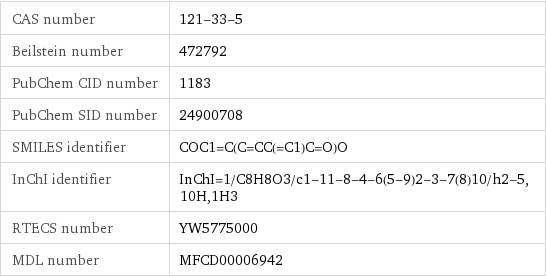
CAS number | 121-33-5 Beilstein number | 472792 PubChem CID number | 1183 PubChem SID number | 24900708 SMILES identifier | COC1=C(C=CC(=C1)C=O)O InChI identifier | InChI=1/C8H8O3/c1-11-8-4-6(5-9)2-3-7(8)10/h2-5, 10H, 1H3 RTECS number | YW5775000 MDL number | MFCD00006942
NFPA label

NFPA label
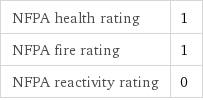
NFPA health rating | 1 NFPA fire rating | 1 NFPA reactivity rating | 0
Safety properties
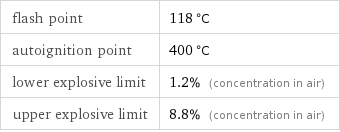
flash point | 118 °C autoignition point | 400 °C lower explosive limit | 1.2% (concentration in air) upper explosive limit | 8.8% (concentration in air)
Toxicity properties

RTECS classes | mutagen | reproductive effector | natural product